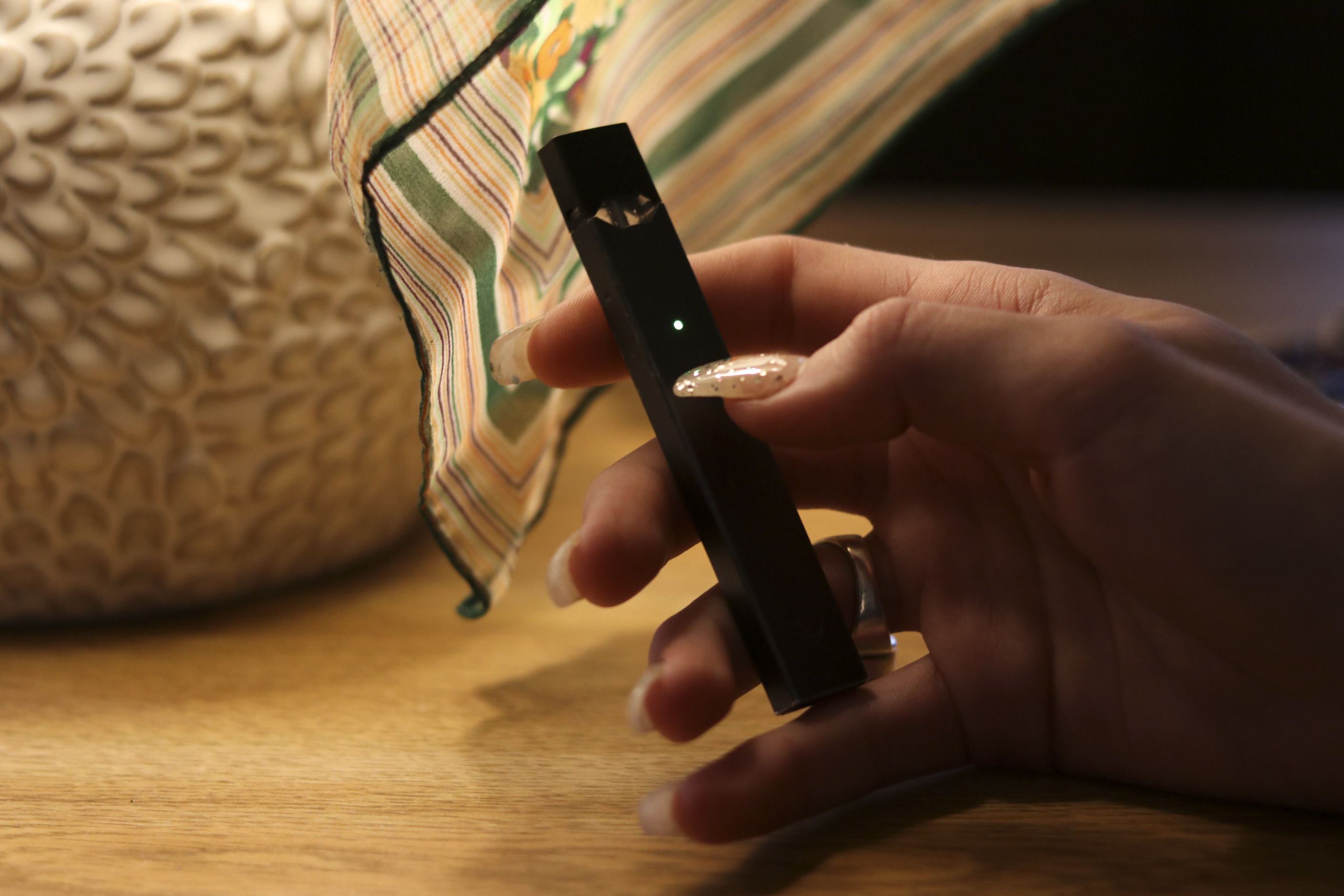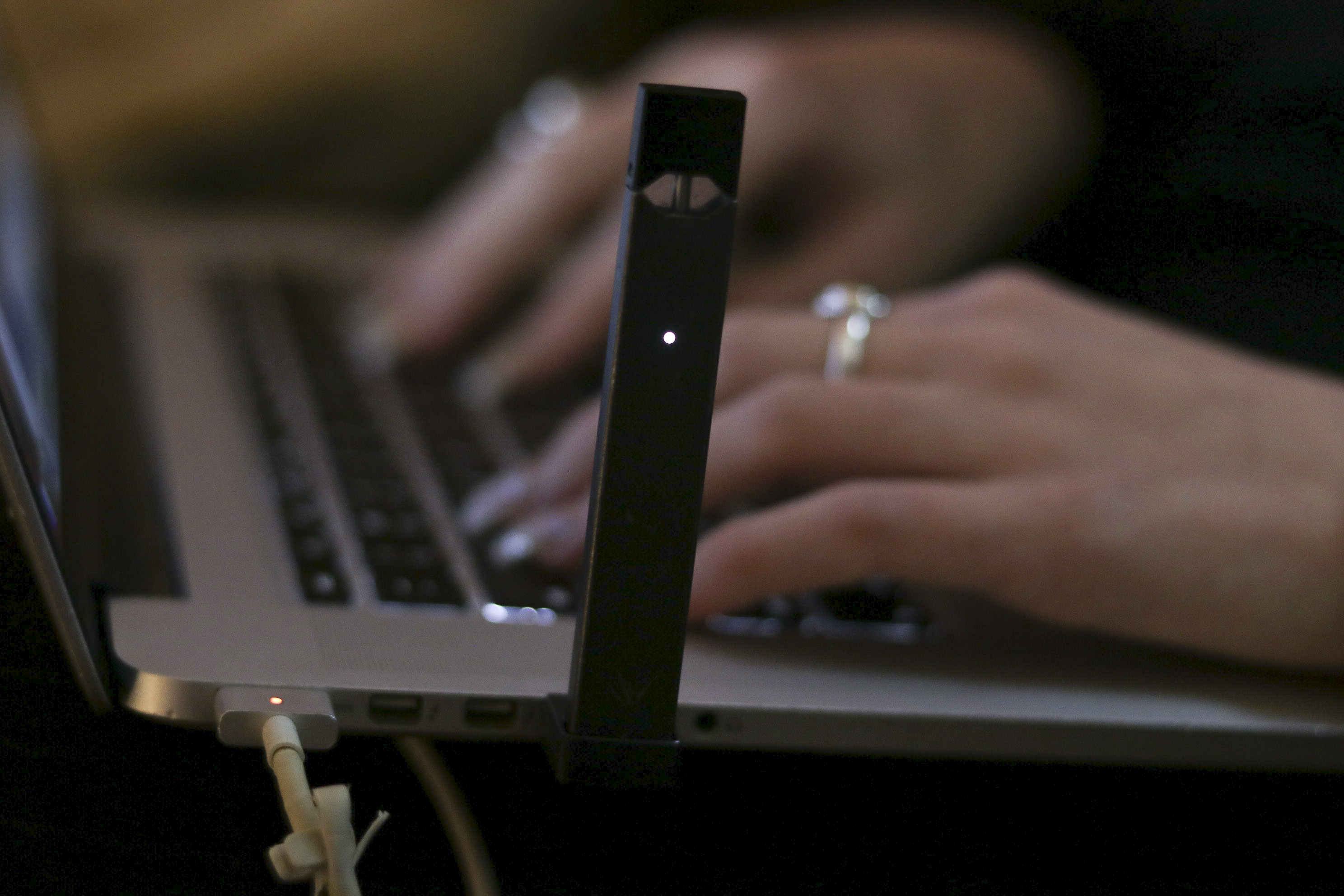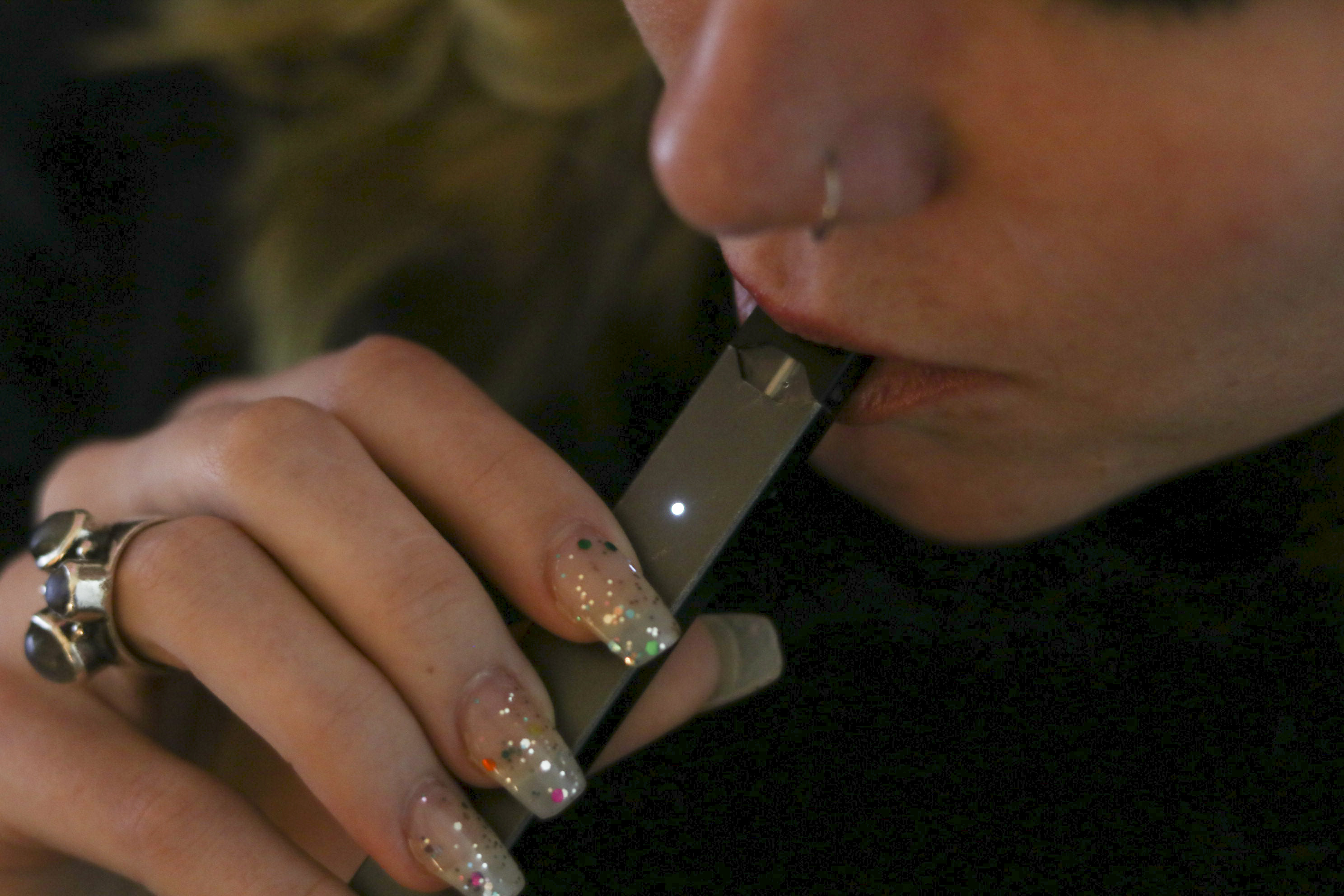
On Nov. 15, the Food and Drug Administration (FDA) released a press statement announcing new steps to curb e-cigarette use among teens and young non-smokers. Scott Gottlieb ’94 penned the announcement, citing the disturbing pattern of youth nicotine use. The new FDA measures would limit advertisements aimed at younger consumers and regulate certain flavors, such as mango, thought to appeal to first-time nicotine users. Although Gottlieb graduated over 20 years ago, his observations hit home at the University, where several students have observed something of a “Juul culture.”
Juuls are a specific brand of e-cigarettes that have come to be known as the “Apple products” of vaping for their sleek design and portability. Although not all e-cigarettes or vaporizers are Juuls, Juuls have stood out in popularity and therefore have taken the brunt of the scrutiny. E-cigarettes entered the market in 2004 as a safe alternative to smoking, providing a nontoxic nicotine vapor in lieu of tobacco smoke. Although you must be 18 to purchase a Juul or any of the cartridges, the e-cigarette soon gained popularity among students as young as 12 or 13.
Gemma Shay ’18 is an avid Juuler who taught high school students at Girls Who Code this past summer and noticed several of their campers sneaking off to Juul in the bathroom.
“I had to reprimand [my students] for Juuling in the bathroom, but I felt so guilty because I was literally doing the same thing,” Shay said in a message to The Argus. “I never smoked cigs in high school, and it’s honestly scary how young kids are when they are getting hooked on nicotine.”
Shay vapes a pod a day, but since their habit has gotten expensive, they’ve started refilling empty Juul pods with off-brand vapor juice. They began Juuling in an effort to move away from cigarettes.
“I didn’t smoke a lot, but I wanted to quit before I got really addicted,” Shay said. “But it backfired, and now I can’t go much more than an hour without Juuling. I’m Juuling in the bathroom at work right now.”
Shay noticed an uptick in Juul use their senior year, primarily among underclassmen.

“I bought my first Juul off a freshman boy in Usdan who said it had an engraving, and then when I picked it up it had ‘Juul Boi Q’ carved into it with a knife,” Shay said.
Although Juul’s official ingredient label contains no toxic or harmful ingredients, recent research has indicated that upon combustion, some of the flavor agents and substances in Juul pods can produce unsavory byproducts. Leticia Costa ’19 and Maya Marshall ’18 conducted a study within the Chemistry Department confirming that Juuls contain ingredients not listed on the packaging. The experiment used both Menthol and Cool Cucumber flavored Juul pods, and the conclusion discovered the aerosol vapor contained various aldehydes and phthalates. Two of the main ingredients in most e-cigarettes are propylene glycol and glycerin, which under thermal decomposition (heat) can produce harmful gases such as formaldehyde. Although the specifics of the substances were not discovered in the study, its findings corroborated a dangerous unknown: that Juuls may not be everything they claim to be.

In an Argus Instagram poll of 96 students, 11 percent reported that they Juul regularly. Shay observed the Juul’s rise in popularity at the University.
“I had heard of vaping obviously but didn’t think it was popular,” Shay said. “Then I feel like one semester, I was on the Eclectic porch and suddenly realized everyone had a Juul.”
Because of the seemingly low stakes and high social pressure, many students fall into Juuling almost incidentally.
“I started Juuling near the end of last semester, very unintentionally,” one student who wished to remain anonymous said. “I had smoked cigarettes for a few years, and my boyfriend at the time had a Juul. I really didn’t care for it at first, but whenever I was with him I would use it (which was frequently). Then, over the course of a month or so, I grew to love it and became increasingly addicted to it.”
Regardless of whether they Juuled or not, most students seemed to be in support of the new FDA regulations, if only to help them quit.

“I’m happy about [the new regulations],” they continued. “In a way, a lot of that is selfish because my reliance on the Juul has gotten pretty out of control, and I’ve been intending to quit for a long long time and have just found myself unable to. So I’m hoping this will make the process of quitting much easier for me—as now it’s an external force out of my control.”
Max Scanlon ’21 is another Juuler who sees the benefits of the new measures, even when they negatively affect him.
“Regardless of the intentions of electronic cigarette companies, any FDA regulation will objectively benefit public interest by limiting e-cigarette access to the overwhelming number of teen addicts,” Scanlon said in a message to The Argus. “As one of these [addicts], I’m personally not for this. But it’s too late for me; save the rest.”
Brooke Kushwaha can be reached at bkushwaha@wesleyan.edu and on Twitter @BrookeKushwaha.


Leave a Reply